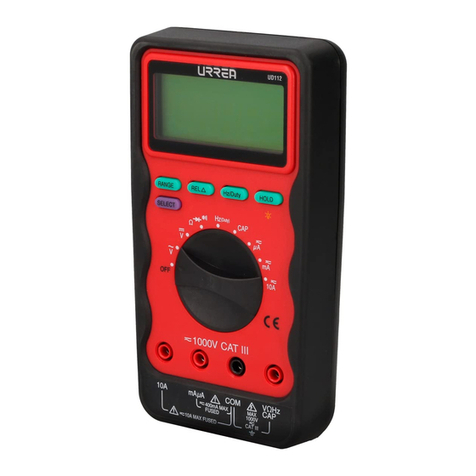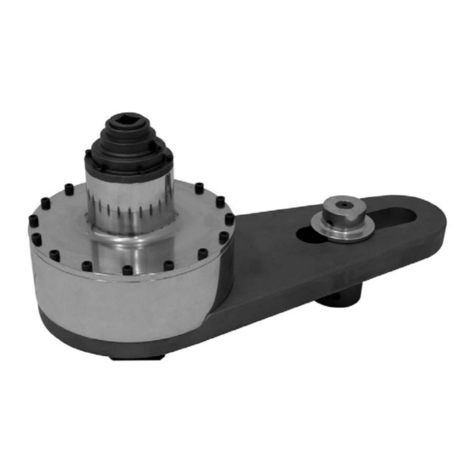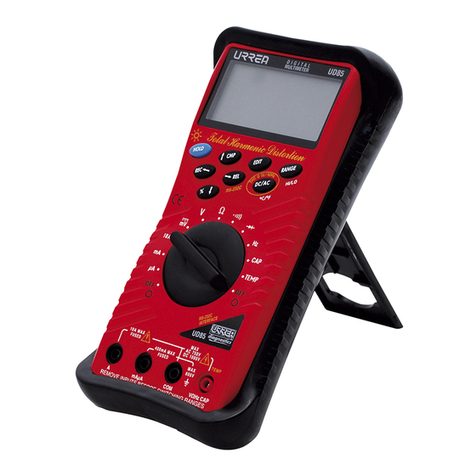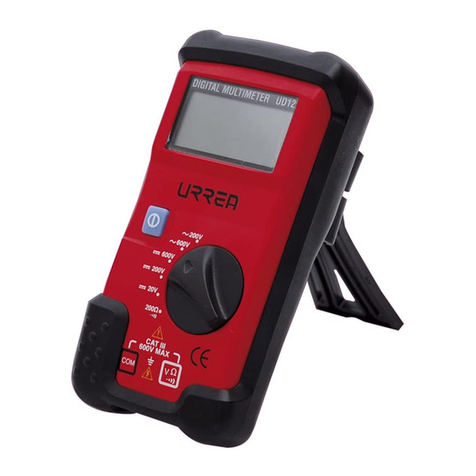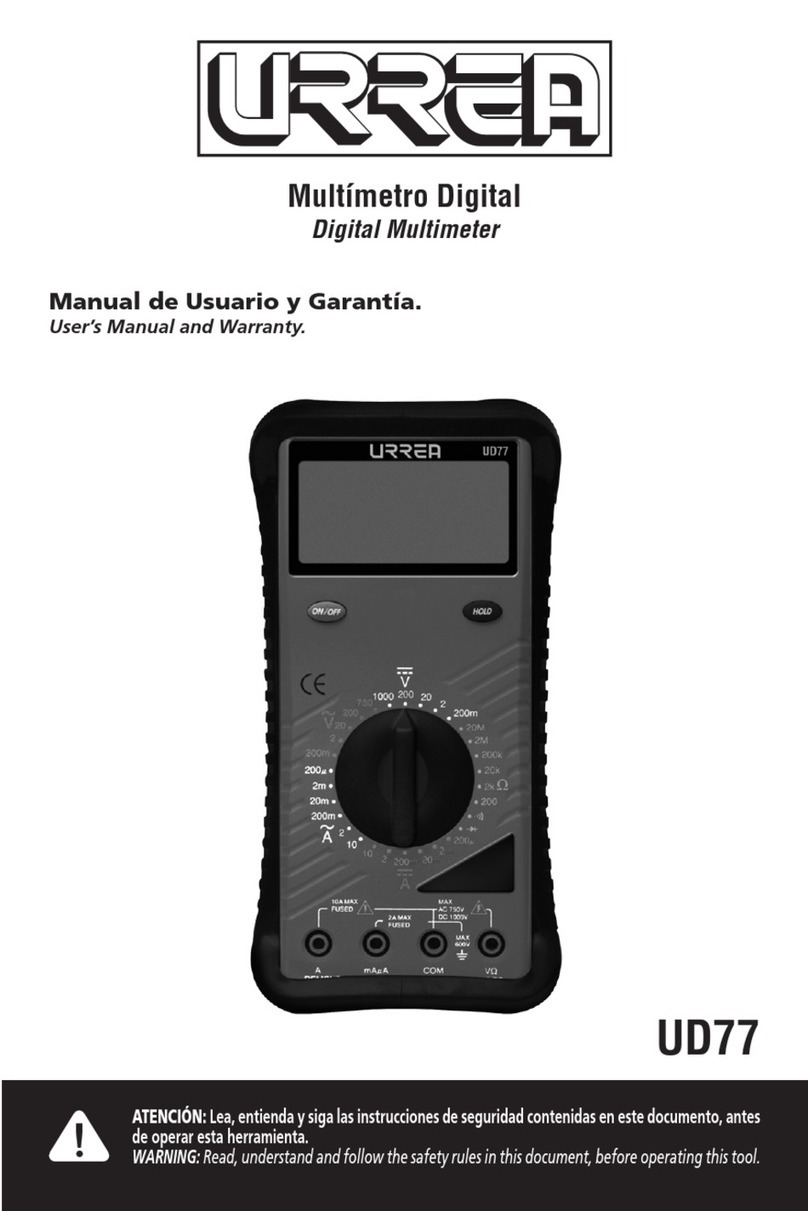
6
ESPAÑOL
de prueba y lea la pantalla. El medidor
emite un tono beep cuando es mostrado
OFL (sobrecarga).
6.3 Prueba de Diodos y Continuidad.
1. Inserte las puntas de prueba en las
terminales de entrada.
2. Posicione el interruptor giratorio en la
función de diodo/continuidad. El medidor
selecciona la función de prueba de
continuidad ( ) / diodo ( ).
3. Para probar continuidad, ponga en
contactos los cables con los puntos de
prueba. El tono beep suena continuamente
si existe continuidad (resistencia < 100Ω).
Para elegir encender o apagar el tono
beep en la prueba de continuidad/diodo,
presione . es mostrado cuando el tono
beep está activado.
4. Para probar diodos ponga en contacto los
cables con el diodo. Una caída de voltaje-
directo de aproximadamente 0.6V (normal
para un diodo de silicón) es mostrada si
el diodo es bueno. Invierta los cables. Si
el diodo es bueno, OFL es mostrado. Si el
diodo está en corto, tonos beep sonarán
continuamente en al menos una dirección.
Si el diodo está abierto, OFL es mostrado en
ambas direcciones.
6.4 Medición de Frecuencia.
1. Inserte las puntas de prueba en las
terminales de entrada.
2. Posicione el interruptor giratorio en la
función de frecuencia (Hz).
3. Ponga en contacto los cables con los puntos
de prueba, y lea la pantalla. Si la frecuencia
medición es mayor de 200KHz, será
mostrado OFL (sobrecarga). En frecuencia,
el medidor está siempre en auto rango
y la función de registro MAX/MIN está
desactivada.
6.5 Medición de Capacitancia.
PRECAUCIÓN: DESCARGUE TODOS
LOS CAPACITORES ANTES DE INTENTAR
TOMAR MEDICIÓNES, EL NO HACERLO
PUEDE DAÑAR EL MEDIDOR.
1. Inserte las puntas de prueba en las
terminales de entrada.
2. Posicione el interruptor giratorio en la
función de capacitancia ( ).
3. Ponga en contacto los cables con el capacitor
y lea la pantalla. Cuando mida capacitores
polarizados, asegúrese de conecte el
positivo a la terminal y la negativa a
la terminal COM. La absorción dieléctrica
del capacitor puede causar errores en la
medición. Si es necesaria más descarga, el
medidor muestra mientras que el
capacitor está descargándose.
4. Para salir de capacitancia, cambie la función
de medición.
NOTA: Use el modo de rango manual
para obtener una respuesta más rápida
de lectura cuando mida capacitancia en
los rangos de 1000 μF o 10000 μF.
7. FUNCIÓN DE PRUEBA
LÓGICA
Esta función es ideal para analizar niveles
lógicos digitales y comunicaciones en serie.
Este medidor mide niveles lógicos en
frecuencias arriba de 400 KHz y detecta
pulsos tan angostos como 2,5 μS para aquellos
circuitos de alta velocidad. Cuando esta
función está trabajando, la pantalla muestra
si el punto de prueba es un nivel lógico alto o
bajo o está pulsando o no está activo.
1. Posicione el interruptor giratorio en la
función de prueba lógica (LP).
2. Conecte las puntas de prueba en los puntos
de prueba.







